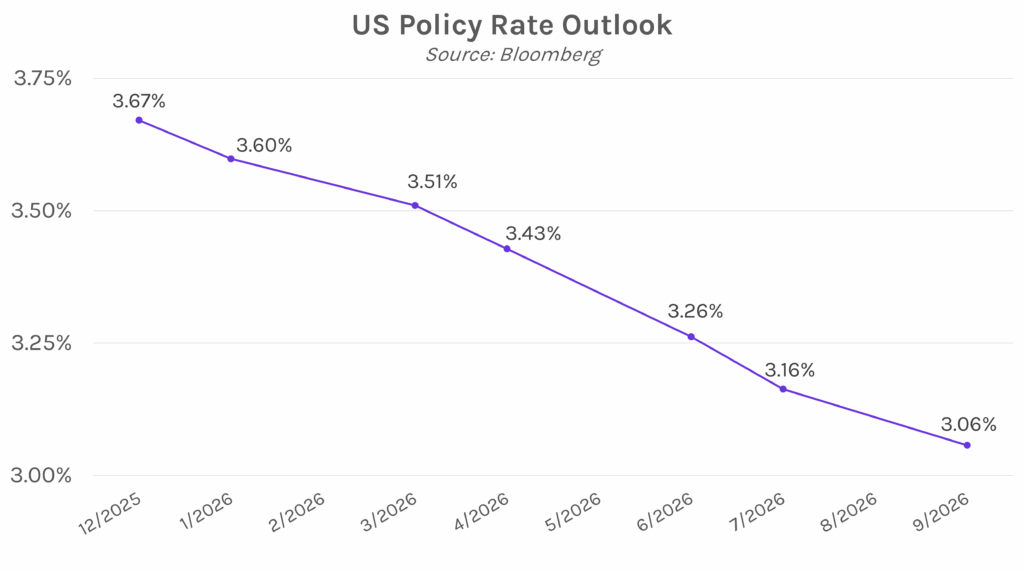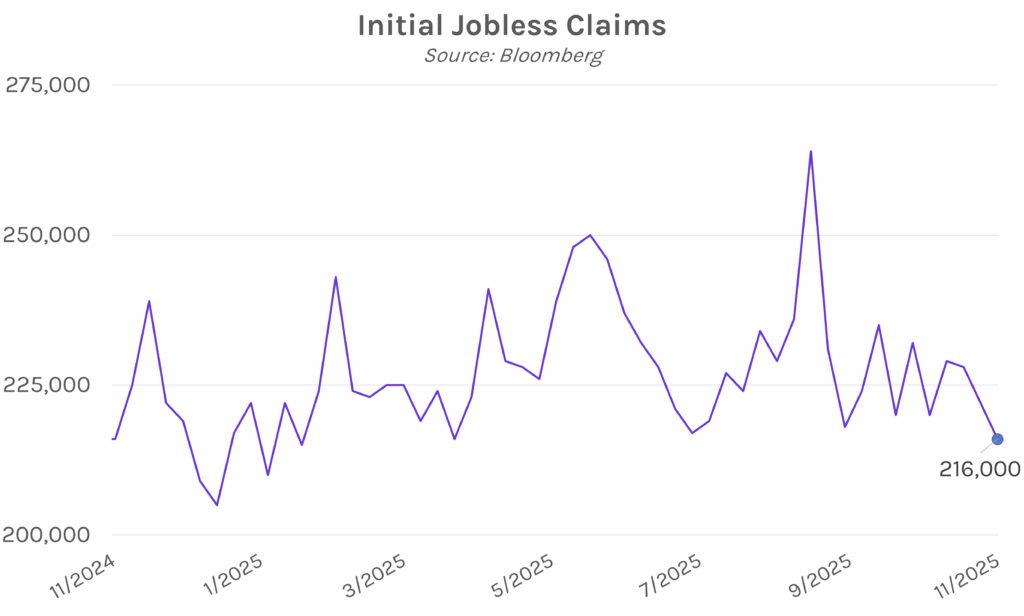Yields rise after initial jobless claims falls to lowest level since April. Treasury yields climbed ~3 bps following soft initial jobless claims data today, which declined against expectations of an uptick. This print did little to change policy rate expectations, with futures markets still pricing in an ~80% chance of a 25 bp rate cut in December. The 2-year yield closed 2 bps higher at 3.48%, while the 10-year yield closed nearly flat at 3.99%. Meanwhile, equities climbed on optimism surrounding technology names, with the S&P 500 and NASDAQ closing 0.69% and 0.82% higher, respectively.

Weekly jobless claims surprise to the downside. US unemployment applications declined to 216k for the week ending November 22, the lowest level since April. The figure came in below estimates of 225k and was down 6k from the prior week. Continuing claims, however, edged up 7k to 1.96 million, underscoring the slow hiring and low firing trend that has persisted in recent weeks. While futures markets expect a quarter-point rate cut at the December FOMC meeting, some economists believe today’s data support the argument to hold policy rates steady, given the absence of significant labor market deterioration.

Turkey prices steady despite bird flu surge. US Department of Agriculture data showed that wholesale turkey prices climbed 80%, from under $1 per pound last November to more than $1.70 this year as bird flu continues to spread through commercial poultry farms. More than 2 million turkeys were culled as of October due to flu exposure. According to David Ortega, a food economist at Michigan State University, a second virus is also reducing the number of viable eggs, making it harder to rebuild flocks. Despite these supply pressures driving up wholesale costs, turkey prices in grocery stores are roughly unchanged compared to last year. Experts say grocery stores are intentionally keeping turkey prices low to attract shoppers, with Ortega explaining, “It’s a pricing strategy, where they put the product and price it at or sometimes even below the cost in an effort to draw customers into the store. They make up for that with other items in the basket consumers buy.”